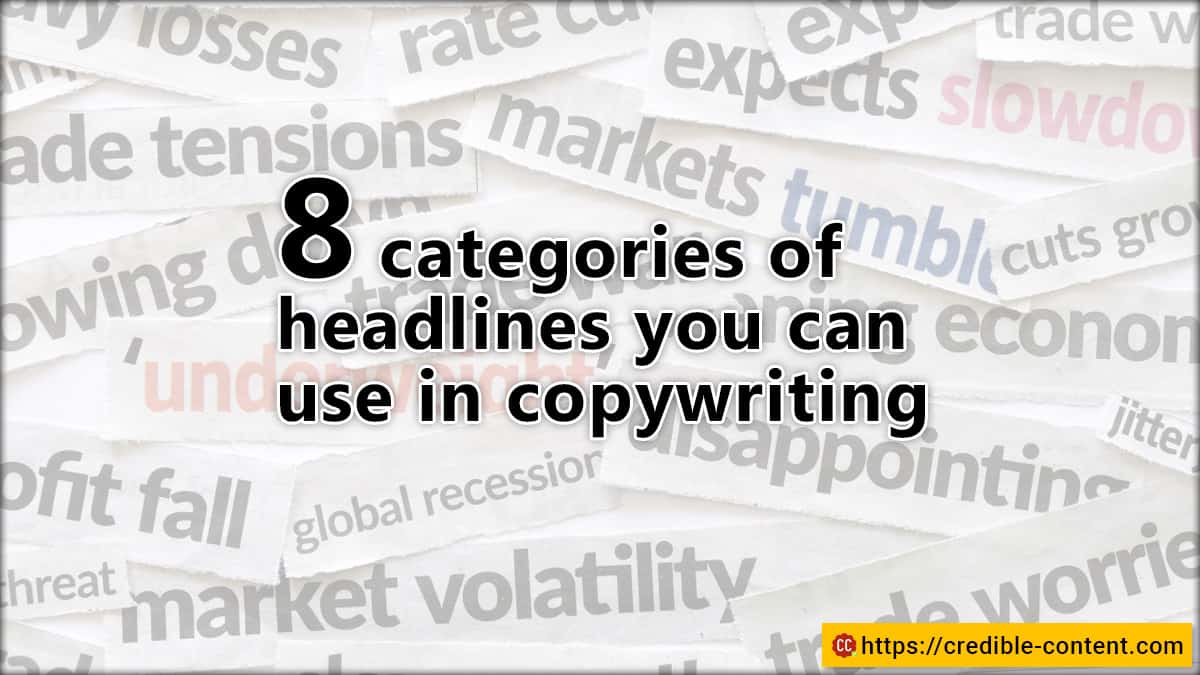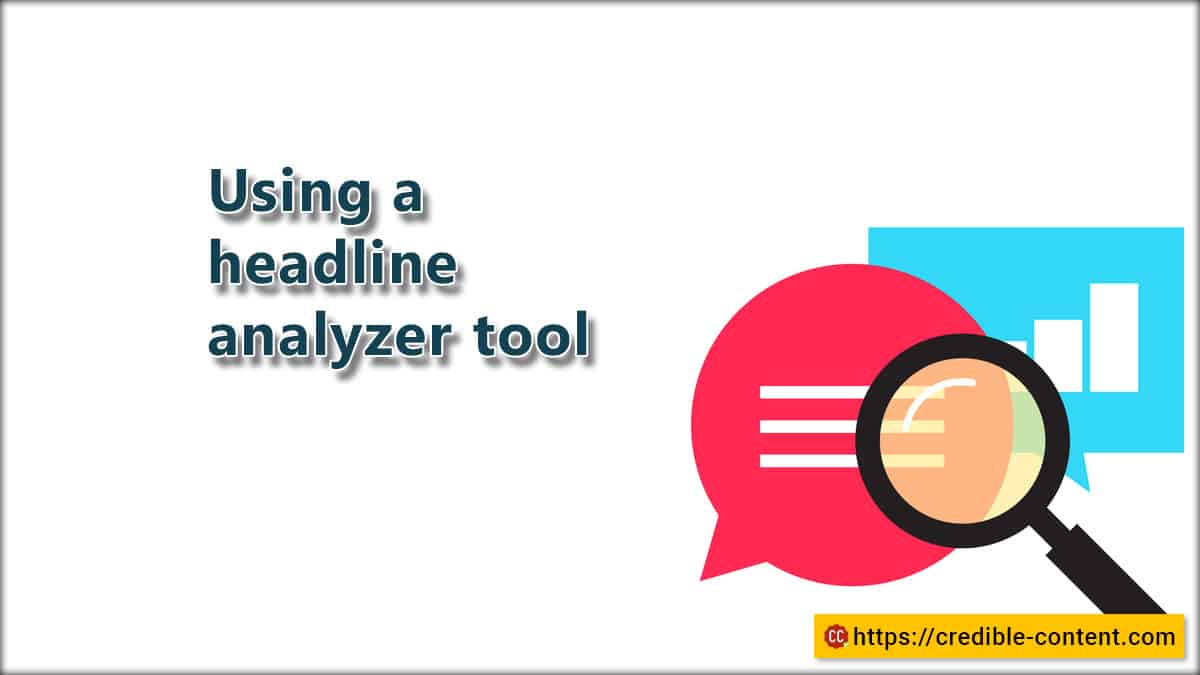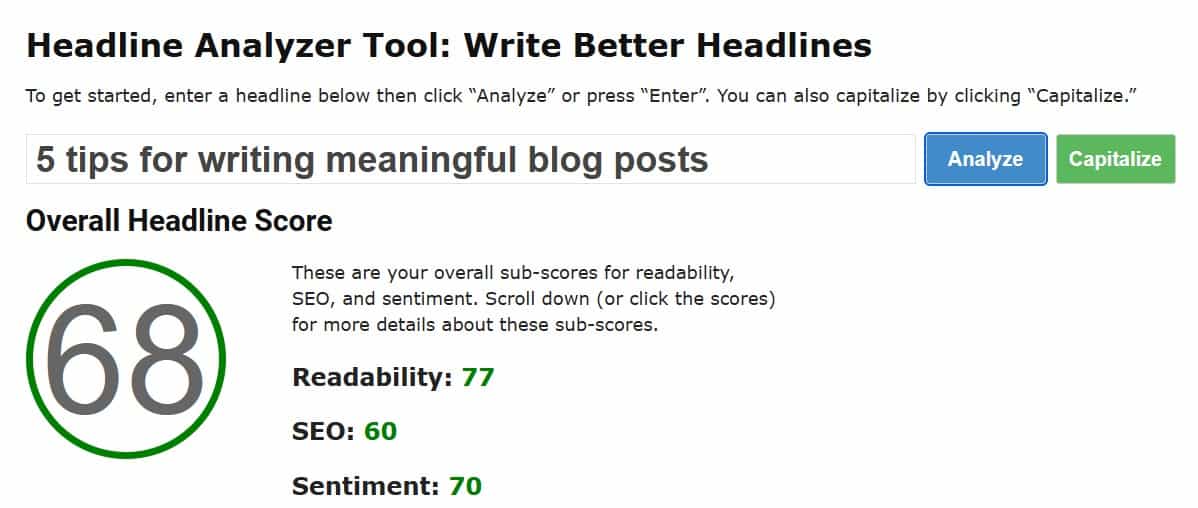
8 categories of headlines you can use and copywritingKasauli simple and syndicate the
Do you know that 8 out of 10 people read your headlines but only 2 out of 10 read your main copy?
Since 80% people are going to read your headline, you can make the maximum impact writing effective headlines.
Therefore, writing power packed headlines has always been a critical part of the copywriting process.
In fact, copywriters like Bob Bly and David Ogilvy suggest that out of the total time you get to write copy for a project, spend 50% time on coming up with an effective headline, and then remaining 50% for the main body content.
When writing copy, should you write your headline first?
There is debate regarding this among copywriters.
If you ask a content writer, he or she will tell you it hardly matters as long as the headline represents the main gist of the content they are writing.
Consequently, many content writers first work on the copy and then based on the contents of the copy, create the headline.
The same happens with headings and subheadings.
First, they quickly jot down whatever thoughts come to them and then later they format the document with a headline, headings, and subheadings.
It depends on your process.
I write the headline first.
This is because my entire copywriting and content writing process centers around the main headline.
I believe that once I have worked out the headline, it becomes easier to write the rest of the copy.
Even when writing headings and subheadings, given a choice, I write them first and then the subtext beneath them.
Headlines and headings are interchangeable.
The term headings are used in terms of formatting and document referencing, and headlines are used as general terms to draw attention from people.
Headlines improve your conversion rate
Whether you want to improve your click through ratio or on-page conversion rate, your headline plays an important role.
Websites like BuzzFeed and Upworthy spend lots of time and effort on headlines that draw massive amounts of traffic from social media websites and search engines like Google.
You may have seen that the quality of the primary BuzzFeed content is not great but their headlines shock, intrigue, and humor.

BuzzFeed headline example
According to American Writers & Artists, there is a “Four U’s” approach to writing headlines.
Your headlines must
- Be USEFUL to the readers.
- Instill a sense of URGENCY in them.
- Communicate to them that the message on the web page is UNIQUE.
- ULTRA-SPECIFIC in nature to tell the readers precisely what you’re offering.
Questions to ask to write effective headlines
Want to write effective headlines?
Here are some questions that can help you write click-worthy headlines.
- Does your headline offer a clearly understandable reward to the reader for reading the main copy?
- Is your headline believable?
- Does your headline contain specific facts that are easy to believe?
- Does your headline figure a strong, actionable emotion?
- Does your headline offer an answer to a question the reader is seeking?
- Does your headline offer an irresistible proposition that is relevant to the needs of the reader?
Effective headlines can be of different types.
Listed below are eight types of headlines that popular copywriters and content writers often use.
Direct, straightforward headlines
Such headlines don’t beat around the bush.
- 30% discount on our holiday package
- Buy the custom printed T-shirt now and get 20% off.
- Free e-book: Data visualization made easy
These headlines offer straightforward proposition.
There is no mincing of words.
There is no guesswork.
The reader immediately knows what is being offered.
Indirect headlines
Some examples of indirect headlines are
- Stop eating this meal now; want to know why?
- The future of technology is right at your doorstep – find out how
- You are never going to get this chance again
- This is how you should have used your phone in the first place
Why are these indirect headlines?
They simply intrigue your curiosity.
They don’t provide any information.
To make sense of these headlines, you need to read the copy that follows.
News headlines
You can learn a lot from news headlines because they are meant to make people read news.
In the olden days when newspapers were sold on the roads, their sales depended on the headlines.
In the newspaper industry, headlines were written so that the newspaper sellers could scream them and prompt people to buy the day’s newspaper.
Some examples of newspaper headlines are:
- NASA launches a new probe to Mars
- The government in Bihar falls, the 3rd time in 5 years
- The corruption charges reveal an interdepartmental web of intrigue
- Credible Content decides to put more stress on day-to-day content publishing
You can see that news headlines are like direct headlines with the big difference that they are about news and not about selling stuff.
How to headlines
These types of headlines are quite prevalent in the blogging world.
Even on my own Credible Content blog, I have written a number of blog posts on the theme of how to.
Some hypothetical examples of the “how to” headlines are:
- How to hire the perfect copywriter for your website in 3 easy steps
- How to make an omelet that is not hard on your stomach
- How to write copy that instantly converts
- How to improve your English writing skills in just 2 days
Question headlines
As the name suggests, a question headline asks a question from the reader.
Questions are always intriguing.
Whenever you come across a question, if you know the answer, you want to respond, and if you don’t know the answer, you want to know it, especially if it is relevant to your need.
Some examples of question-based headlines are
- Are you looking for a content writer who understands your business?
- Are you sick of your current accounting software?
- Do you know that germs can be life threatening?
Command or action headlines
Such headlines directly tell people to take an action.
Strong action words are used in the beginning of the command or action headlines.
Some example:
- Download our FREE e-book now
- Avail 20% discount now
- Subscribe to our newsletter today
- Order your biryani today
- Do command headlines work?
Sometimes they do and sometimes they don’t.
It depends on your messaging.
My personal take is that such headlines work better as subheadings or call to action buttons.
Readers should be exposed to such headlines when they have already read a major portion of your copy.
‘N’ reasons why headlines
Such headlines have become popular in the age of web content.
First, a few examples:
- 13 reasons why you want to use WordPress as your preferred blogging platform
- 5 reasons why you must hire a trained copywriter for your business
- 25 reasons why people are abandoning your shopping cart
“Reasons why” headlines can be very effective.
When people come across them, they know exactly how many points you are going to cover.
There is no magic figure.
Nonetheless, the grapevine is that odd numbers perform better than even numbers for “reasons why” headlines.
Testimonial headlines
Testimonials come from real people.
From real customers and clients.
Some examples:
- Our business registered 5% growth after switching to this accounting software
- Initially I was doubtful, but then I was blown away
- They delivered a project in 2 weeks after committing to a deadline of 4 weeks
Testimonial headlines are easier to believe in.
Instead of you blowing your own horn or using some sort of verbal trickery, the customers and clients who have used your product or service themselves are vouching for you.
Listed above are the main categories of headlines that you can write for your web pages, blog posts, and articles.
Different headline categories may perform better in different situations.
No matter how great a copywriter you are, you need to experiment.




